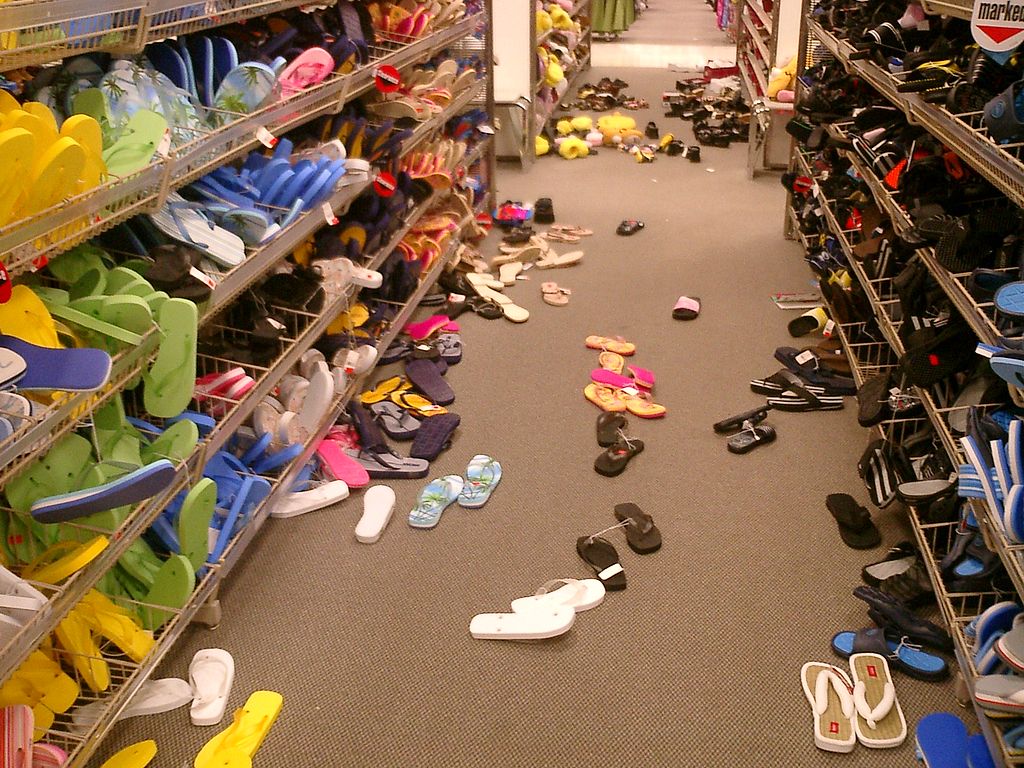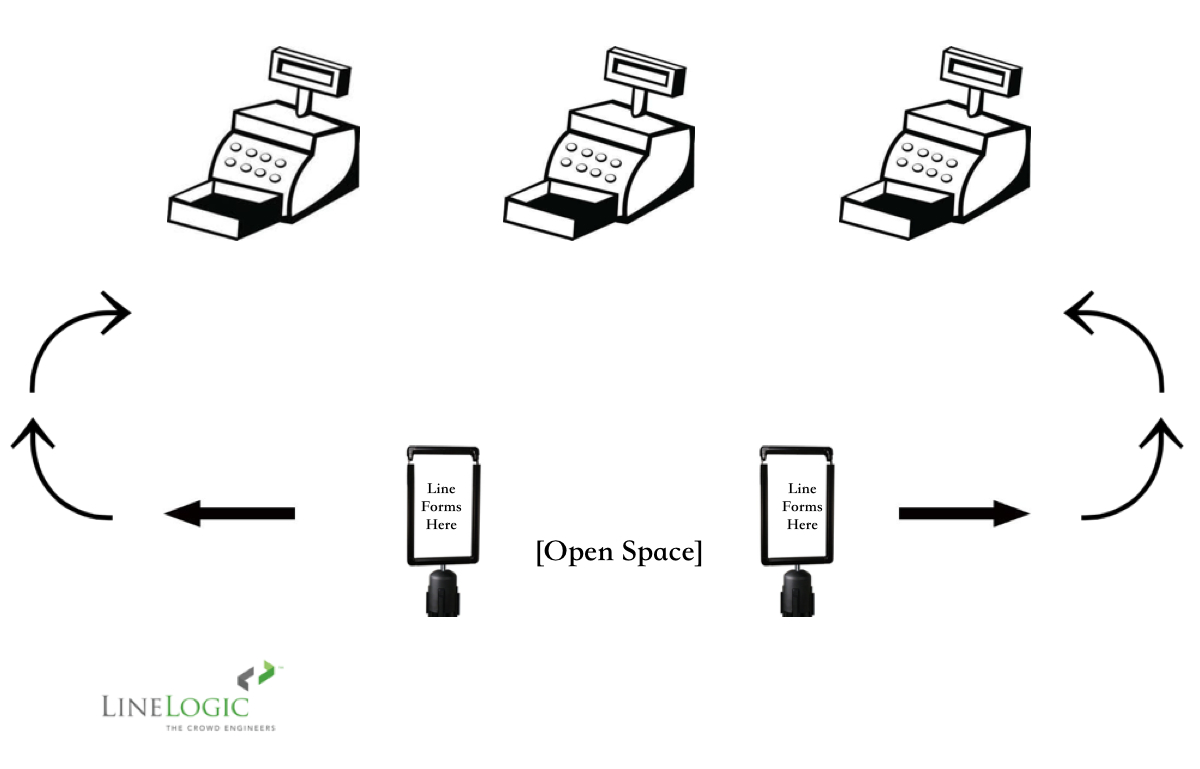I went shopping for some new shoes this weekend. When I arrived at the store, I was shocked by the crowds. It was a beautiful, sunny Sunday, so I kind of figured most people would be outdoors, but that was not the case. Apparently everyone was in need of some soles.
Anyhow, as I was shopping, I saw this giant, snaking line, that appeared to have no starting point and seemingly went on forever. I was checking out some shoes near the queue, when I heard people complaining. They weren’t upset with the length of their wait – the lines were actually moving quite quickly. They were unsure of where to get in line.
The store was using Tensabarrier stanchions arranged in a single line queue, but the flow and communication were both really jumbled (see diagram below).
At first glance, you might think everything looks good. That’s the issue. It does look good. It seems as though you enter at either side and approach the next open register. However, the left entrance and register were used solely for returns. That would be fine, if customers were told this with different text on the sign, or a permanent fixture above the register. But both signs simply said “Line Forms Here,” and there was no sign denoting a return area or register.
So as a swarm of anxious shoe shoppers approached the queue, they entered from both sides, waited for a bit, and then those on the left were eventually told to move to the other line.
Want to find a quick way to piss off your customers? Do that. Make them wait for a few minutes, then tell them they’re in the wrong line and make them start at a further position in a new line.
All of this brings me to my final, most important point. That is, having the proper queueing equipment – and a strategy surrounding it – is imperative to comprehensive customer service. Consumers don’t notice queueing equipment if it’s in the right place. They only notice it when it’s in the way, causing confusion, doing the opposite of what it’s intended to do. And when that happens, they’re irritated with the establishment and the staff representing it.
Businesses are very similar to consumers in this way. They don’t think about queueing equipment until there’s a problem – their posts begin to show rust, someone complains, a kid hurts his hand on a stanchion with broken belt brakes. All of these are common issues. But they shouldn’t be.
Why wait? Why not take a thorough look at your queueing system now, before something goes wrong? Does your crowd control equipment maximize efficiency or slow things down? Does it blend in with your atmosphere or stick out like a sore thumb? Does it provide assurance to your customers or create confusion?
Ask yourself these questions. It may be time to reevaluate the equipment you’re using as well as your overall queueing strategy. If you think now’s the time for you, give us a call and ask for one of our Crowd Engineers – 1.844.202.5910.


